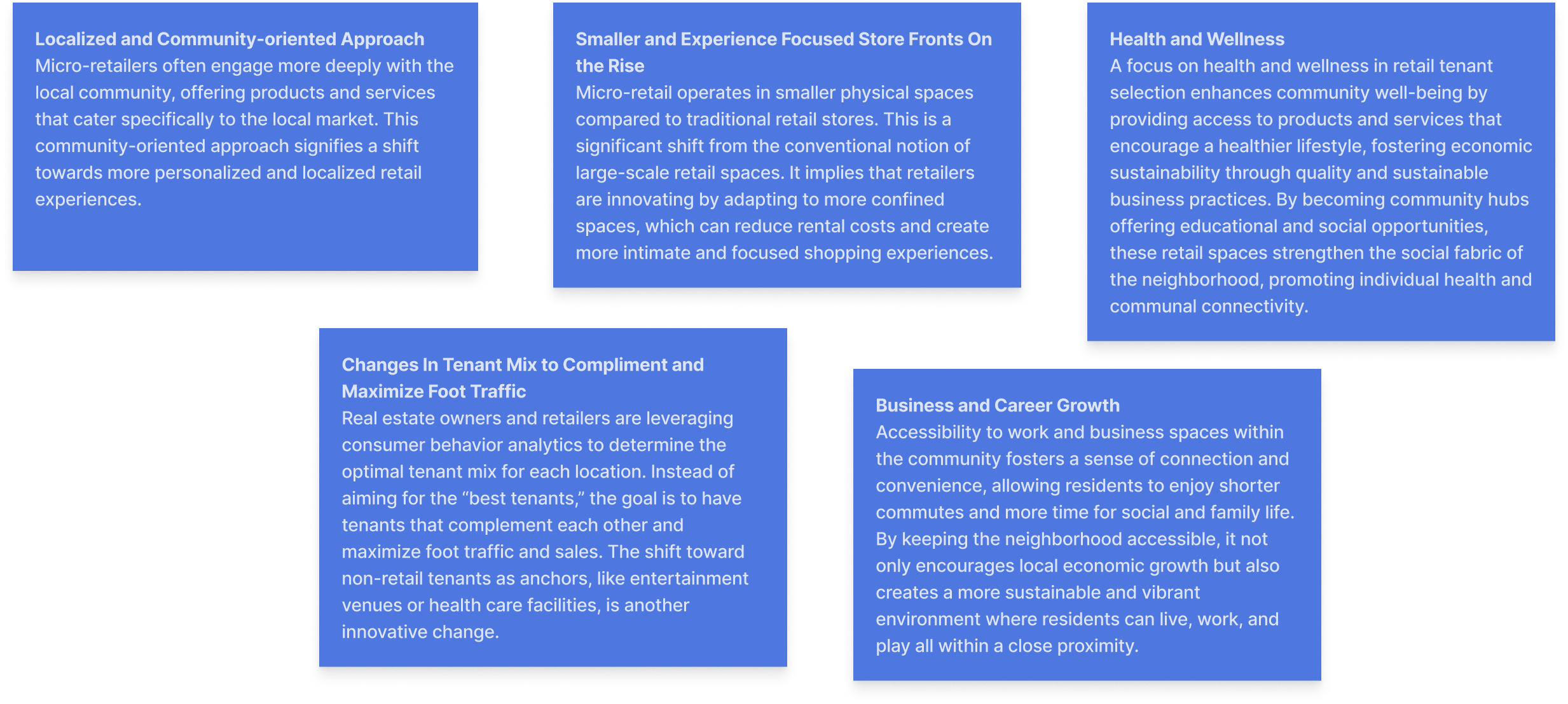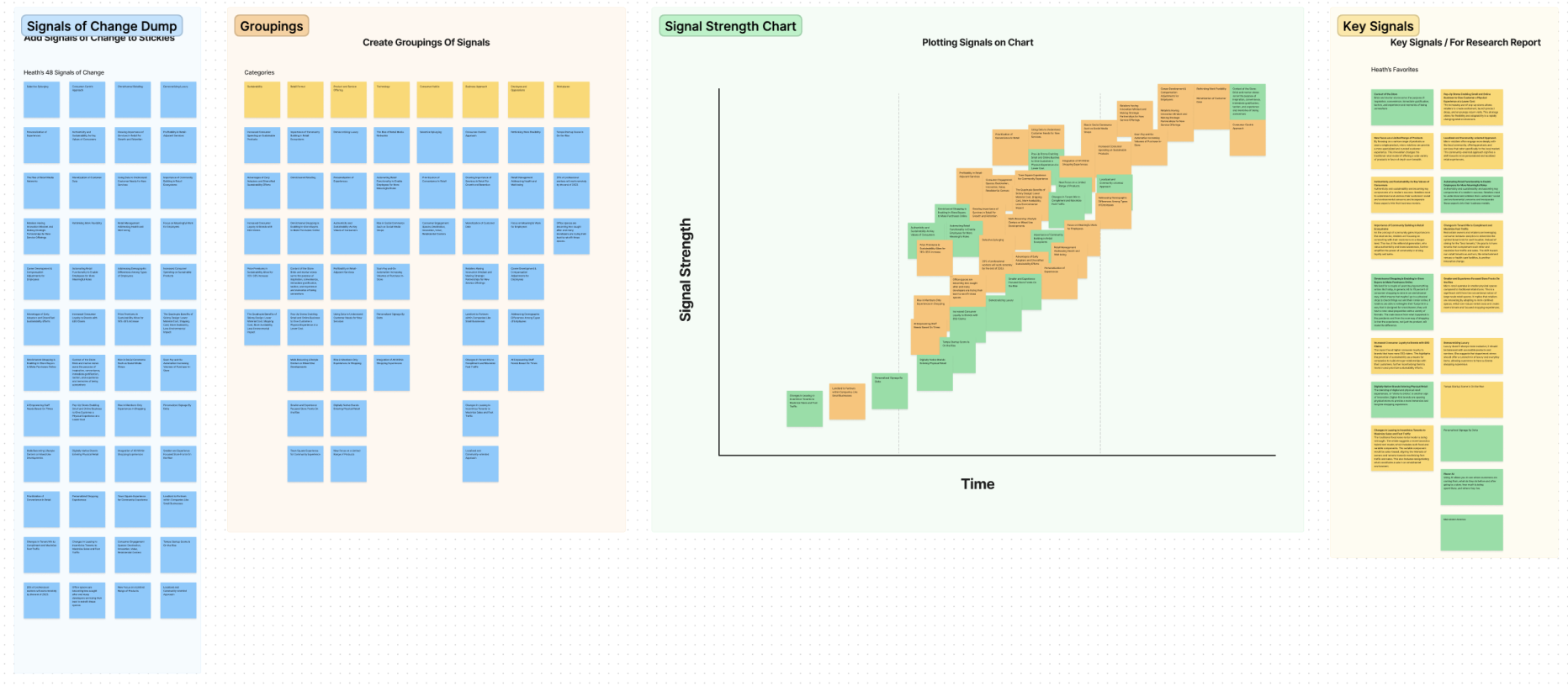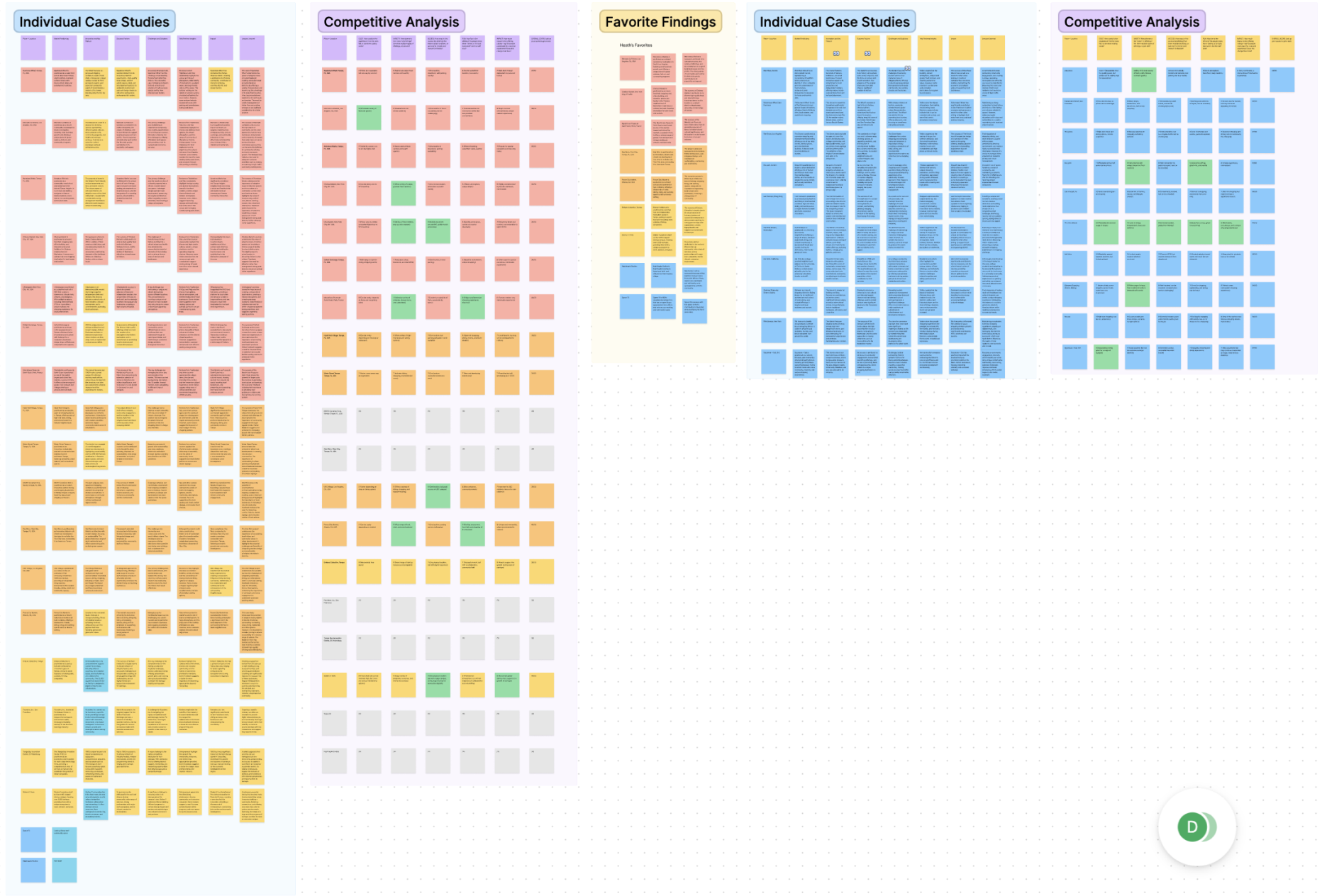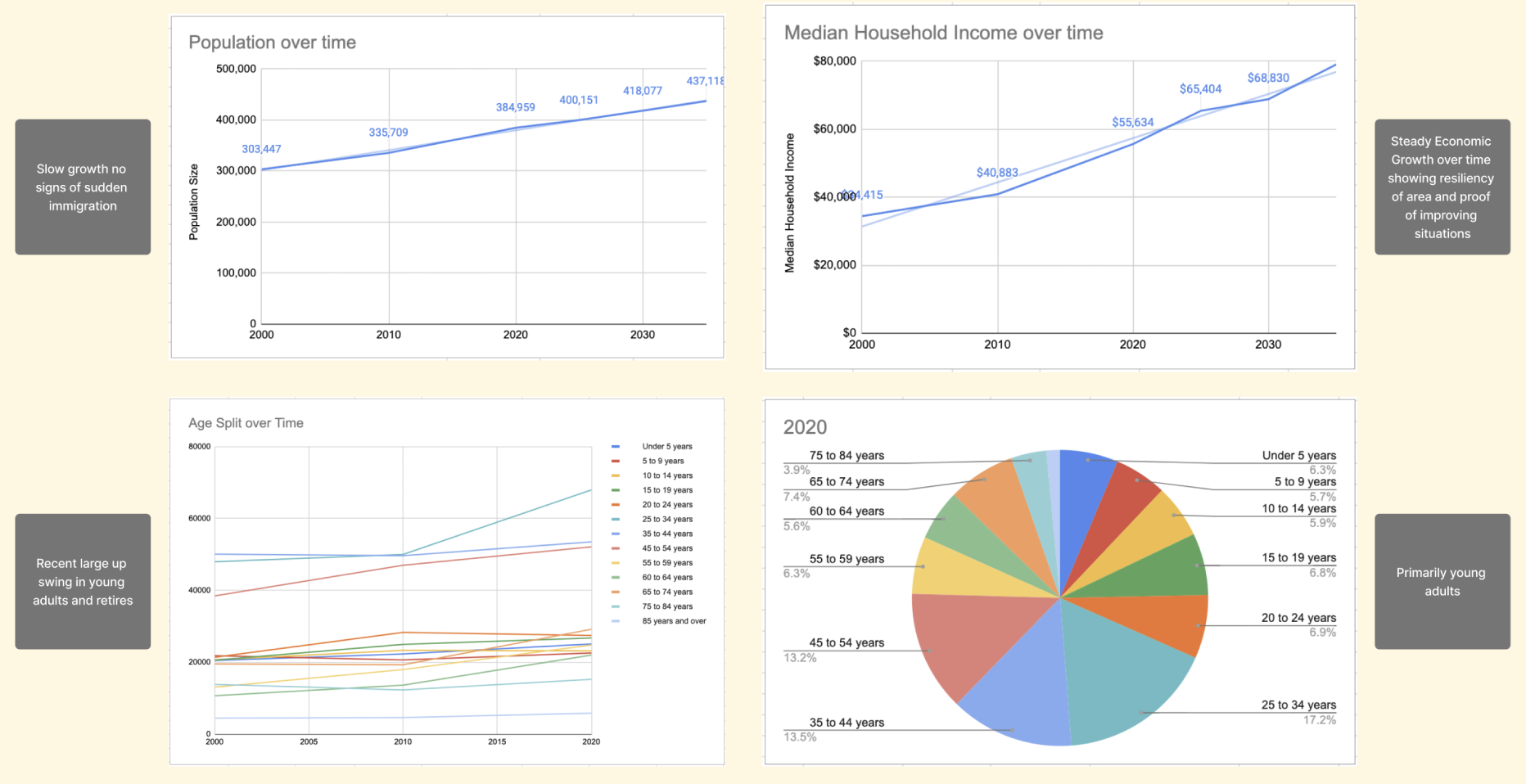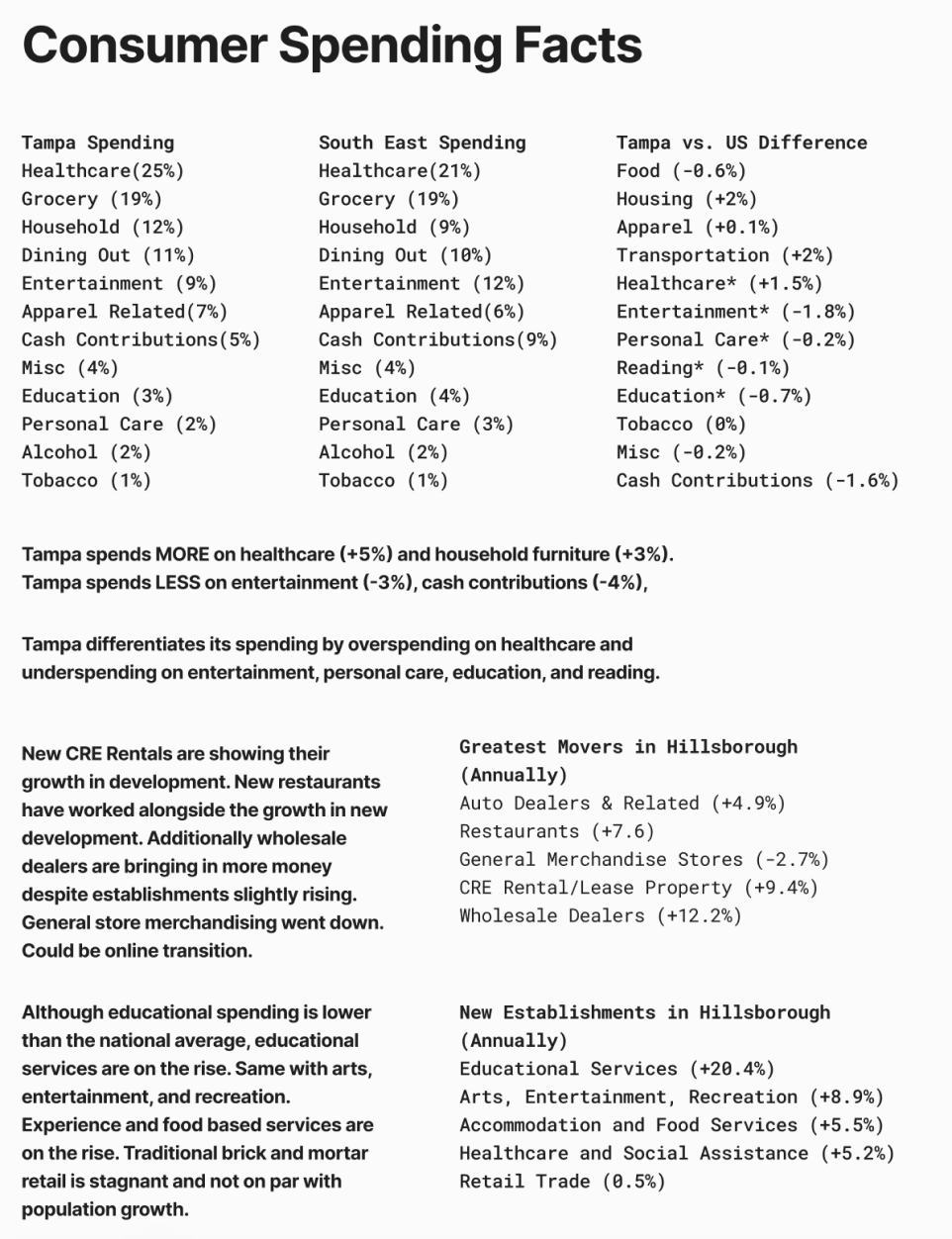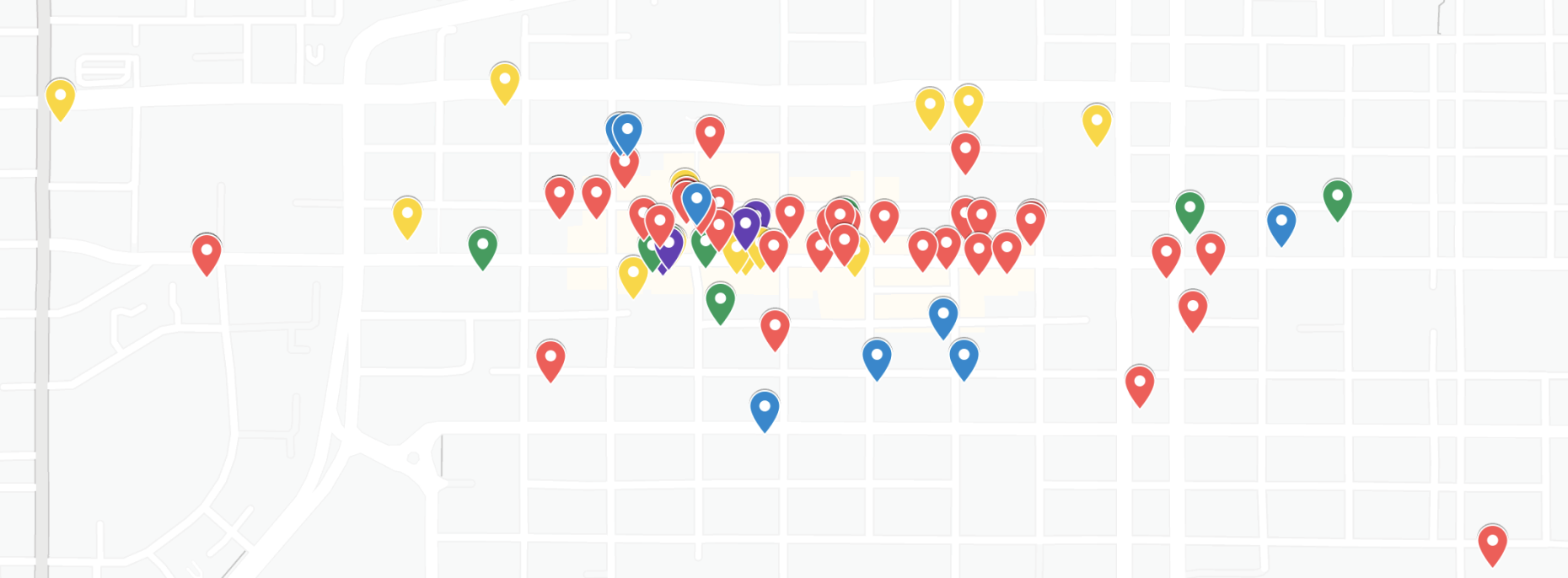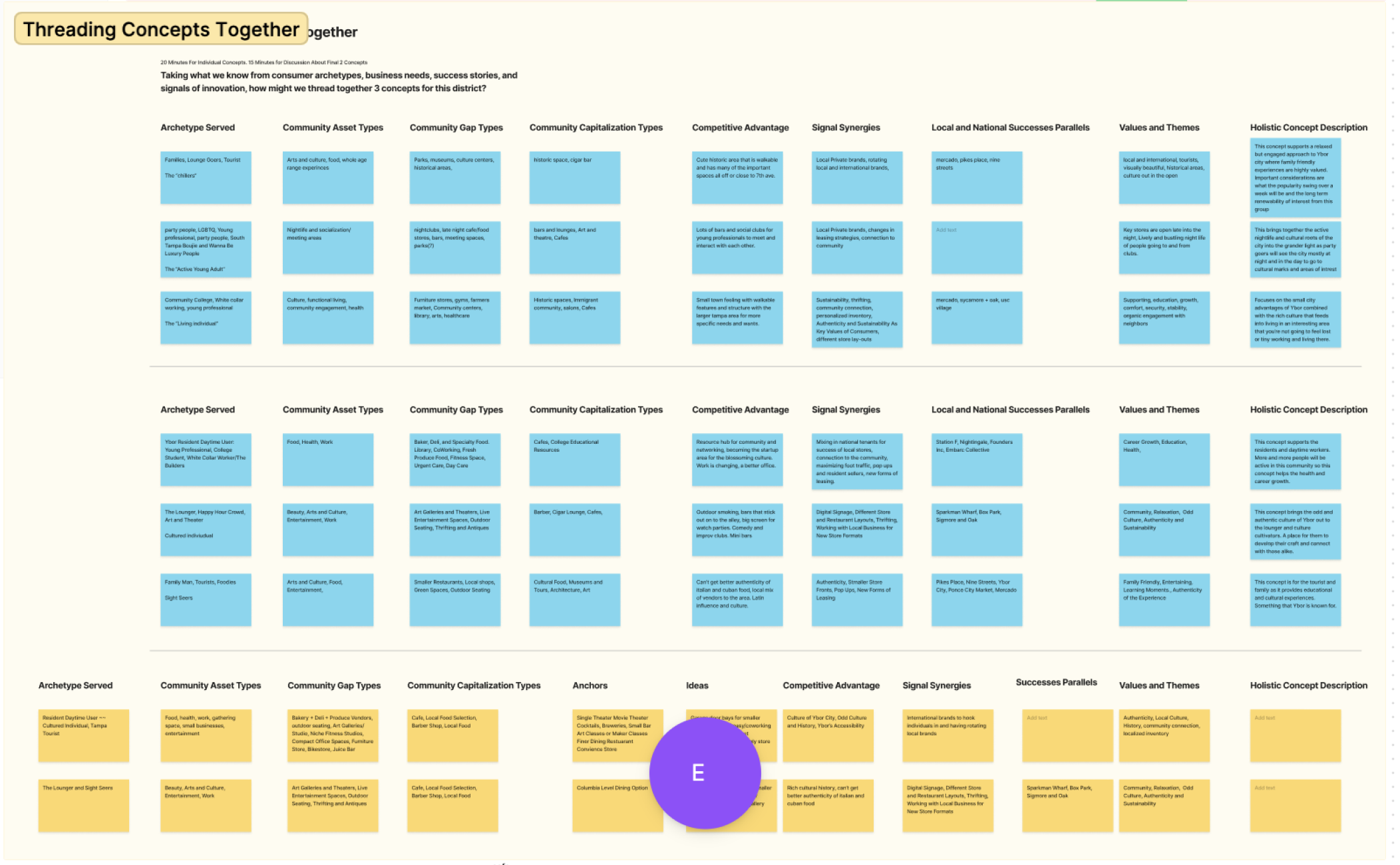About This Retail Study
Cigar Alley is a hypothetical retail district concept designed for Tampa’s Ybor City neighborhood. This study’s goal is to provide insight into what a district could look like to enhance the area’s rich historical and cultural attributes, which are appealing to tourists, while promoting new residential growth.
While still bringing traditional storefronts, our vision emphasizes supporting small businesses, startups, and artists alike, providing flexibility, and lowering entry barriers, in a micro retail and office format. This approach ensures we capture the authentic spirit of Ybor while ensuring inclusivity for businesses. We aim to celebrate the city's essence, offering residents, locals, and visitors a retail experience that is authentic and memorable.
The purpose of this four-week retail study sprint was to formulate a potential tenant mix that would effectively cater to and resonate with our target demographics in Ybor City.
Below, you'll find details on the emerging opportunities and shifts in Tampa, two concepts each highlighting an archetype’s ideal tenants and mix, and a concise case study explaining our research and curation process that led to our conclusions.
Opportunity Matrix: Examining Greater Sphere of Tampa Retail offerings
Ybor City stands distinct in Tampa's commercial landscape, its rich history and unique culture making it irreplaceable. This heritage offers a distinctive shopping and dining experience, interlacing historical aesthetics with diverse offerings. To cater to Ybor's charm, there's an opportunity to craft a tenant mix that mirrors the needs of local residents and businesses while embracing the diversity that draws visitors and sustains a vibrant population.
The graphic illustrates Cigar Alley's emphasis on a local approach and diverse offerings compared to the broader retail landscape of Tampa.
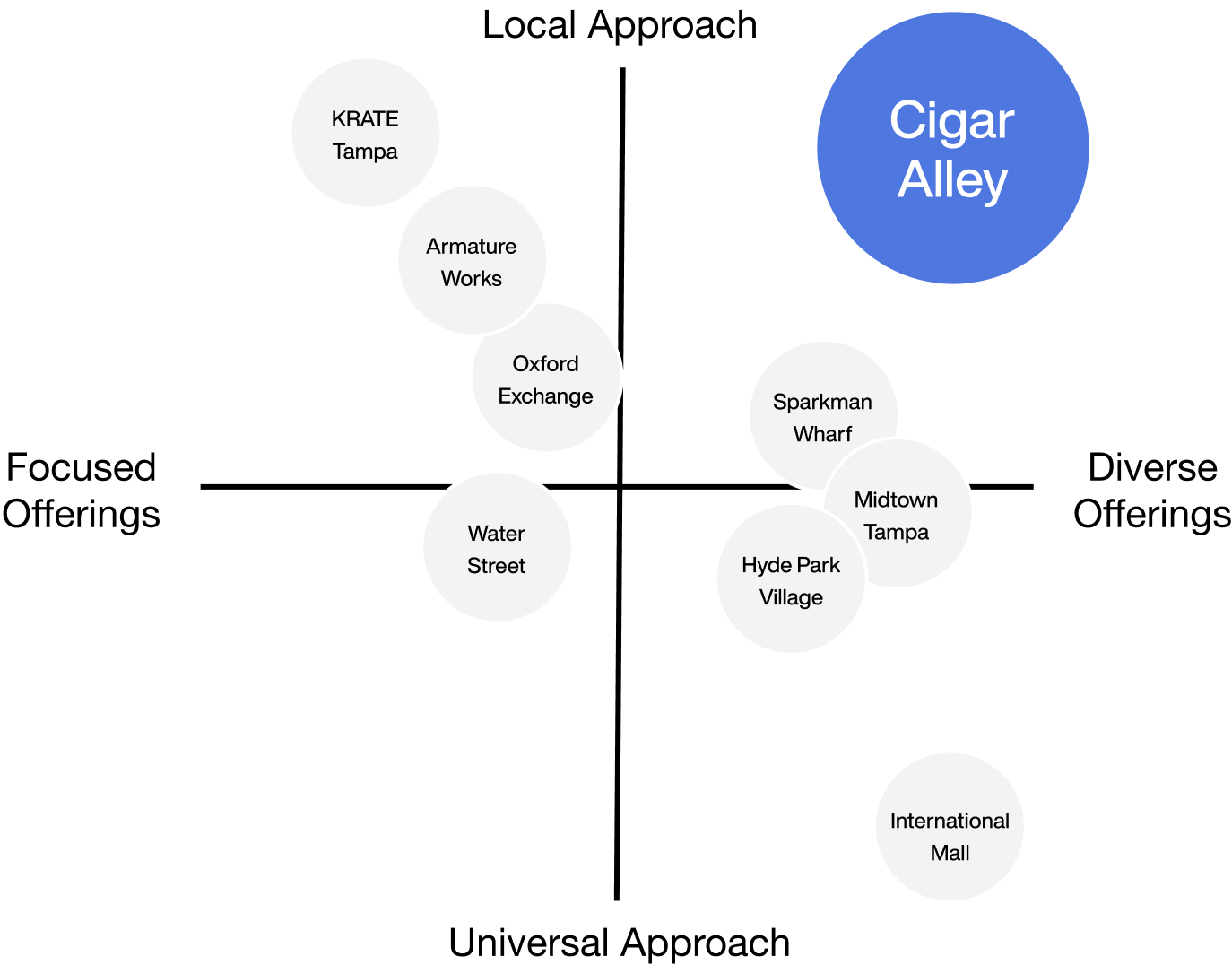
Tampa’s Evolving Demographics
A crucial aspect of this study involved understanding the evolution of Tampa’s demographics. Using data from the census bureau and local statistics, we could ascertain current figures and project the demographic composition for 2030. Below are statistics—including population makeup and income trends—that informed our curation of the tenant mixes.
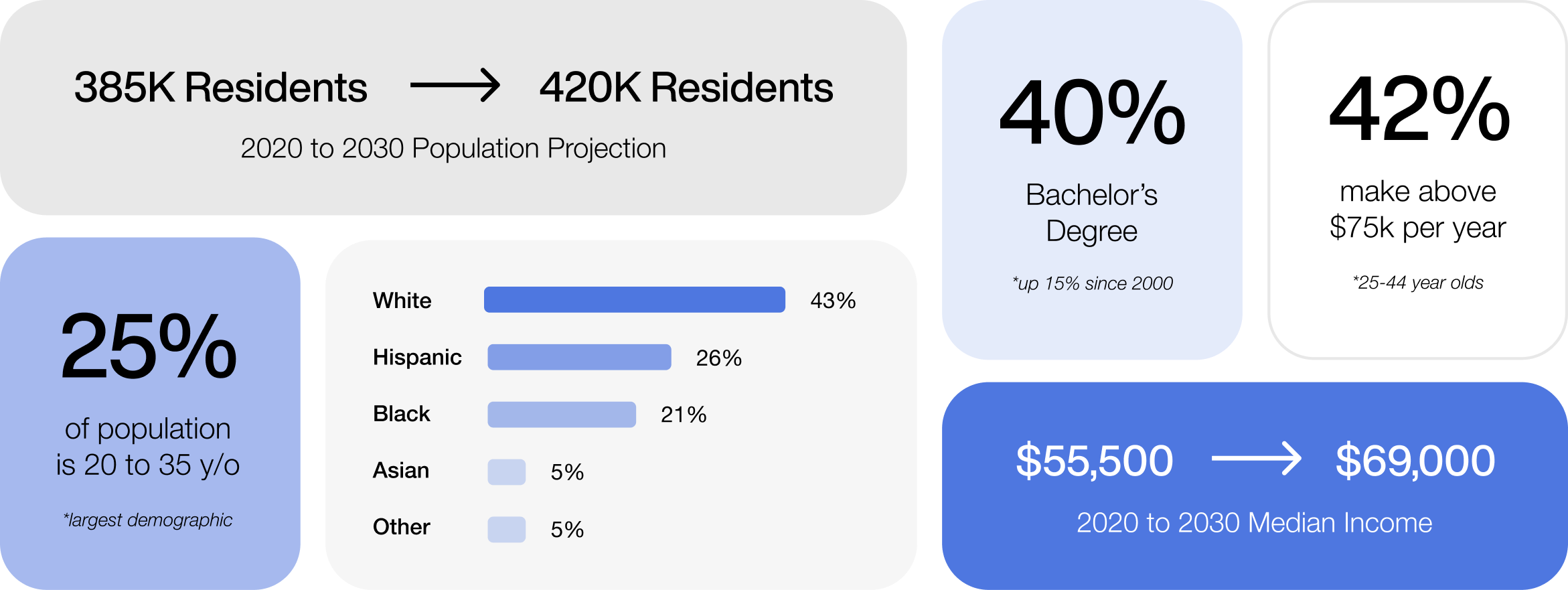
Concept 1: Sightseers
The archetypes we chose were, first, who we call the Sightseers. The 'Sightseer' is a culture seeker, cruise ship tourist, or the Tampa local looking to immerse in Ybor's vibrant history and culture. We believe that a localized retail approach focusing on genuine experience, mixed with art and cultural learning opportunities, can effectively satisfy this desire for authentic connection and leisure.
Being an established neighborhood, Ybor City already possesses certain tenant types that add to its unique character that this archetype appreciates. For this concept, we believe capitalizing on the strengths of the local ethnic food scene, the entertainment provided by cigar lounges and bars, and the resurgent art and theater culture would entice Sightseers to visit Cigar Alley.

Delivering Community Assets
A community asset or resource is defined as any element that augments the community's well-being. For each concept, we aim to introduce four distinct categories of community assets.
For the Sightseers category, our intention is to showcase retail that embodies aspects of local culture, providing immersive experiences. Bearing this in mind, we aim to establish infrastructure that promotes art and culture, introduce fresh local food options, emphasize daytime entertainment offerings, and facilitate educational opportunities via retailers—for instance, a cookware store that offers cooking classes.
ARTS & CULTURE🎨
FRESH FOOD🥙
ENTERTAINMENT🤩
EDUCATION📚
Tenant Types
As highlighted earlier, our vision emphasizes support for small businesses, startups, and artists. We aim to offer flexible micro-retail and office spaces, lowering entry barriers yet continuing to incorporate traditional storefronts. The examples illustrate how specific tenants can leverage these flexible micro-units to bolster their business.
For this concept, we curated a blend of tenant types for the Sightseer’s desires. These address market gaps and leverage Ybor's strengths, aligning with the previously mentioned community asset focuses.
- Art Studios & Mini Galleries
- Small Bars & Cigar Lounges
- Thrift & Antique Stores
- Local Artisan Goods
- Local Bakery & Deli
- Boutique Home Goods Store
- Art & Stationary Supply Store
- Bookstore & Music Store
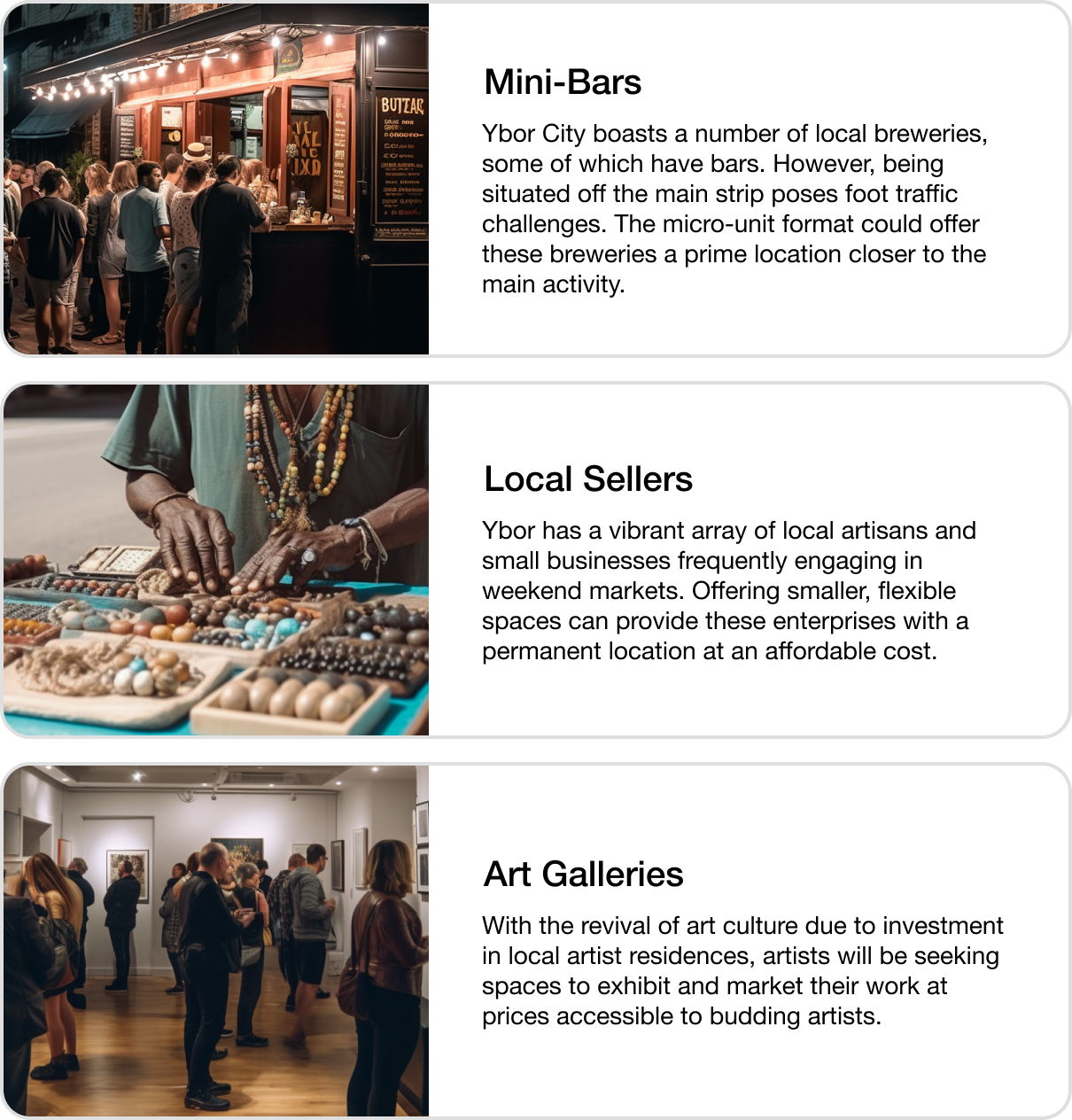
Potential Anchors
Anchors play a pivotal role in retail development, serving as the storefronts or experiences that generate the most traffic, bolstering the entire development. For the Sightseers concept, we propose incorporating diverse cultural dining options—from restaurant-style cafes to fine dining. Additionally, a multi-use theater, versatile enough to accommodate a variety of tenants such as jazz/comedy clubs or theater companies, would harness entertainment as a key attraction for visitors.

Concept Strengths
Ybor's distinctive culture, which is inimitable, sets the Sightseer concept apart. By melding this cultural essence with localized retail, we foster a development that resonates with both the neighborhood's history and the current residents and businesses that shape its landscape. Highlighted below are the unique strengths that underpin the success of our concept.
- Historical Significance & Architecture
- Supporting Local Small Businesses
- Local Cultural Food
- Slower Consumption
- Educational Opportunities

Planning for the Future of Retail
For each concept, we began by posing the question: How do we envision retail adapting to new innovations and cultural shifts? We then examined adjacent indicators of change to incorporate within each concept. Below are five fundamental shifts or innovations that will influence the development.
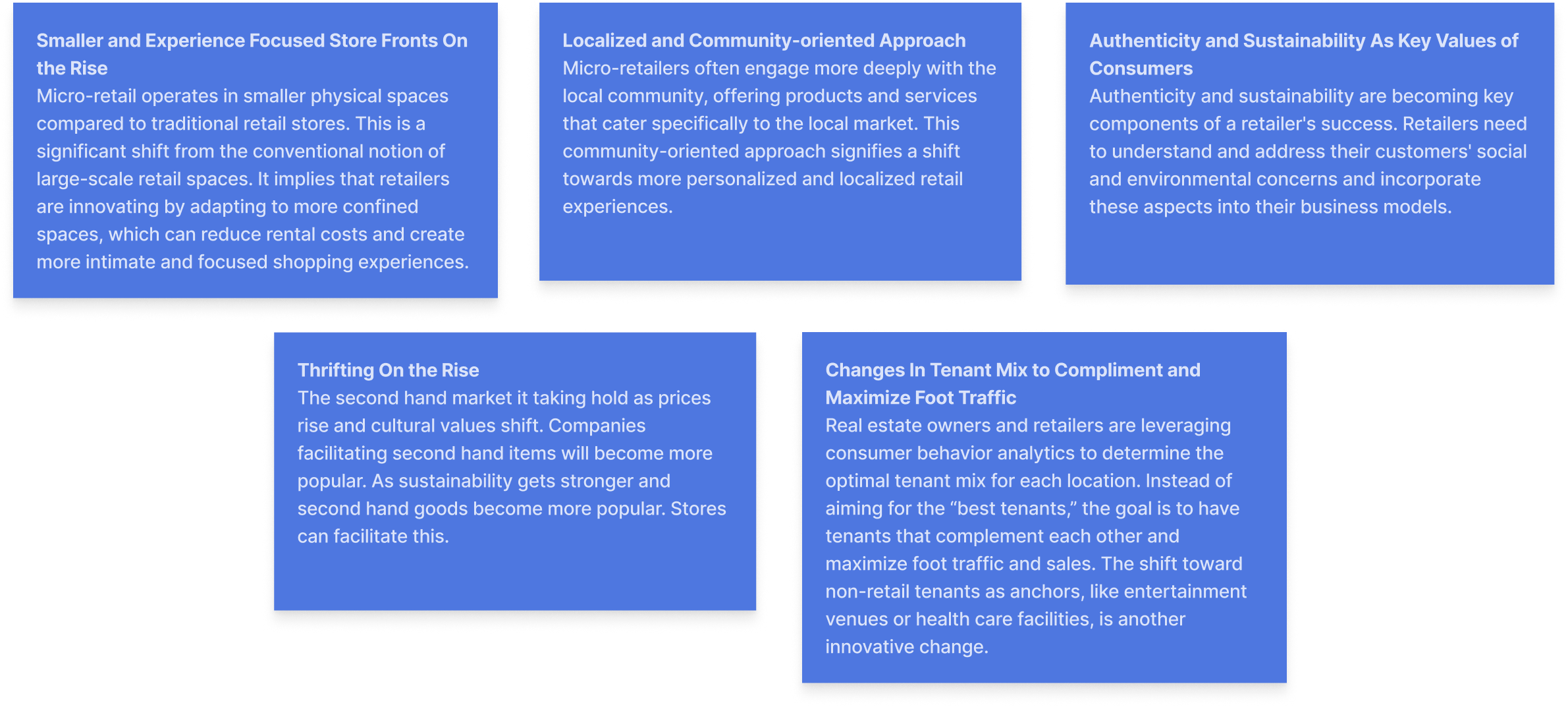
Concept 2: The Living Person
The second archetype we want to serve is who we call the Living Person. This individual is the Ybor resident, the weekday worker, and/or the young professional. This group prioritizes convenience in their everyday routines, accessibility to business infrastructure, and cherishes active participation in, and connection with, the community.
Over the past 30 years, Ybor has been recognized primarily as an entertainment district with minimal residential development. However, as Tampa undergoes further urbanization, Ybor City is poised for an influx of new residents. In anticipation of this growth, it's imperative to establish infrastructure and retail outlets that cater to everyday routines and lifestyles. With this in mind, we plan to leverage Ybor's inherent strengths that align with the community's emerging demands. For instance, providing local fresh food will address grocery needs while fostering cafe culture, and work studios can cater to the professional needs of both office-bound and remote workers.

Delivering Community Assets
For the 'Living Person' archetype, which embodies Ybor's daytime vitality, our goal is to foster both convenience and community. We aspire to seamlessly connect residents, weekday professionals, and workers with the core of the district. Therefore, we emphasize community assets in food, health, and wellness to enhance livability. We also focus on career infrastructure, providing nearby office spaces and storefronts. Furthermore, we prioritize creating 'third spaces,' ensuring life thrives beyond just work and home and enabling the community to flourish.
FRESH FOOD🥙
HEALTH & WELLNESS🤸♂️
CAREER INFRASTRUCTURE👨💻
GATHERING SPACE🌳
Tenant Types
For the 'Living Person' concept, we curated a tenant mix designed to cater to the expanding residential population. This mix emphasizes community assets that promote health and wellness, offer daily convenience, and support career needs.
- Local Deli, Bakery, & Butcher
- Compact Office/Studio Spaces
- Niche Fitness Studios
- Bikestore
- Home Aesthetics
- Pet Care and Supply
- Juice & Beverage Bar
- Art & Stationary Supply Store
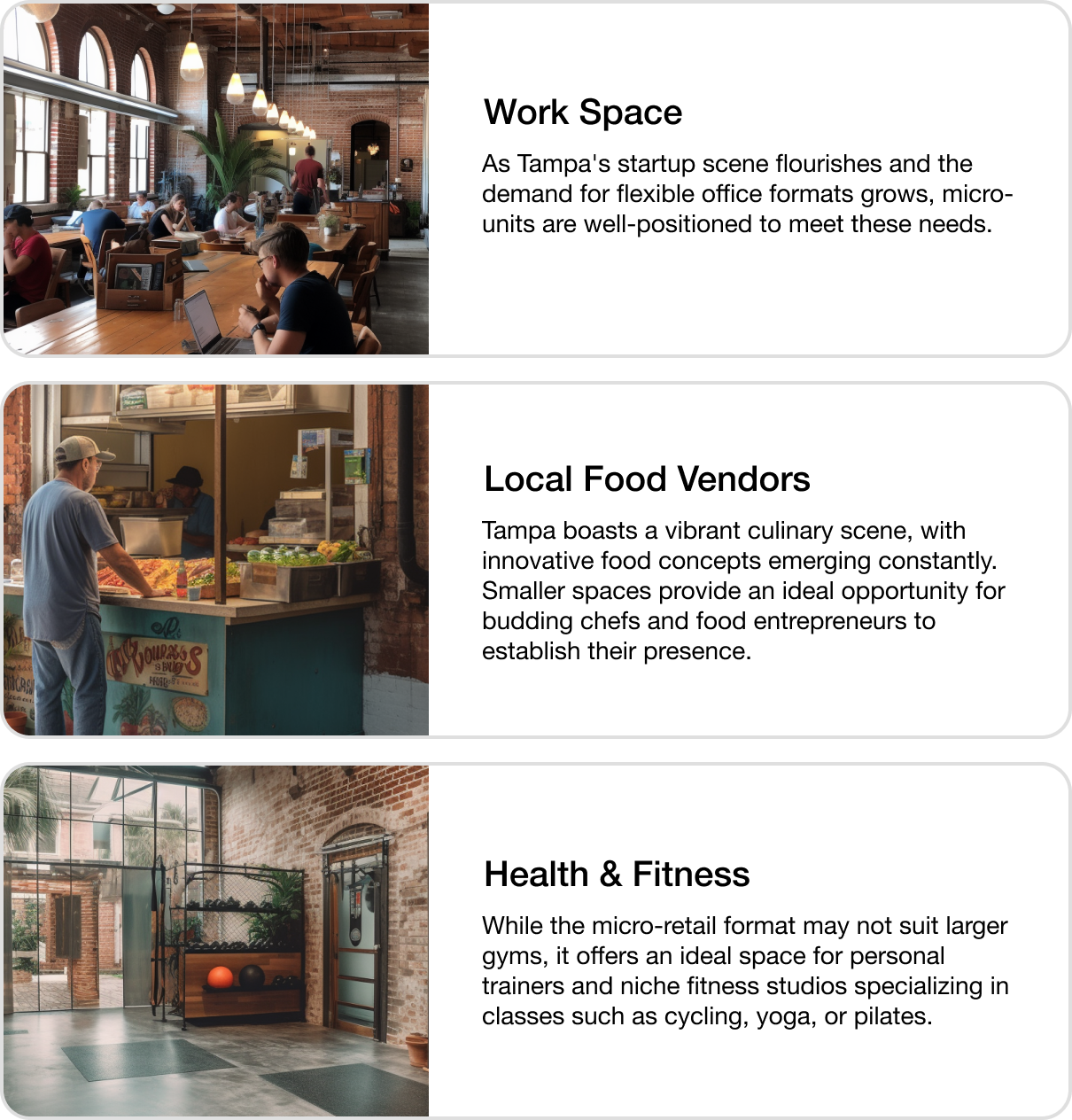
Potential Anchors
Anchors play a pivotal role in retail development, serving as the storefronts or experiences that generate the most traffic, bolstering the entire development. For the 'Living Person' concept, we believe a convenience store would be a significant attraction for the local community, given the existing gap in accessibility to everyday goods. Moreover, a local fresh food market featuring specialty vendors—like an Italian butcher or a Cuban bakery—would supply the community with premium ingredients. Importantly, such a specialty market would face minimal competition from larger grocery chains.

Concept Strengths
With Ybor being one of Tampa's most accessible neighborhoods for pedestrians and cyclists, coupled with its distinct emphasis on resident routines and lifestyles, it has the potential to transform into a vibrant community hub for its residents. The unique strengths that bolster the success of our concept are outlined below.
- Community Oriented Approach
- Complimentary Stores
- Health and Wellness
- Business and Career Growth
- New Store Layouts
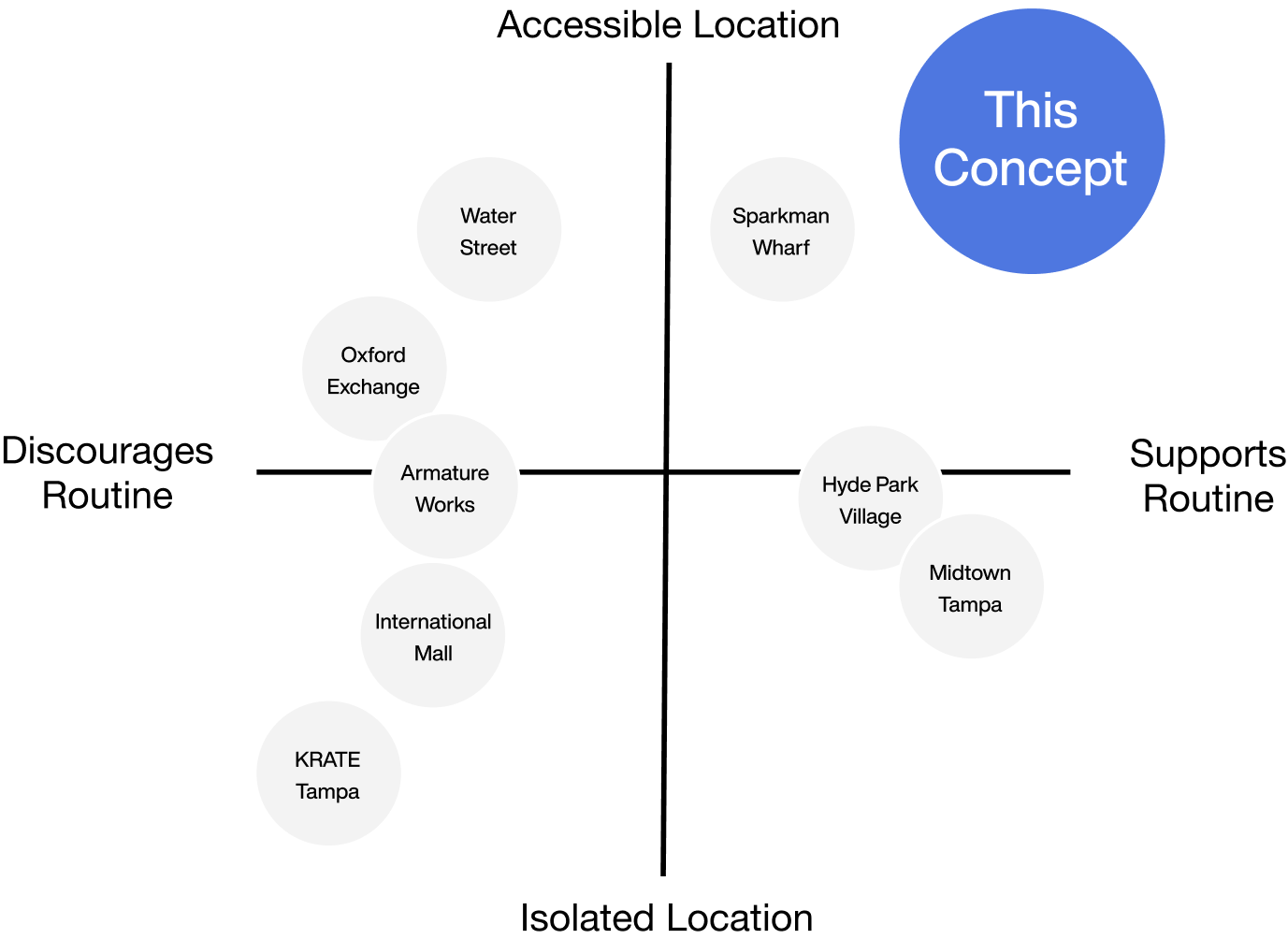
Planning for the Future of Retail
For each concept, we began by posing the question: How do we envision retail adapting to new innovations and cultural shifts? We then examined adjacent indicators of change to incorporate within each concept. Below are five fundamental shifts or innovations that will influence the development.
